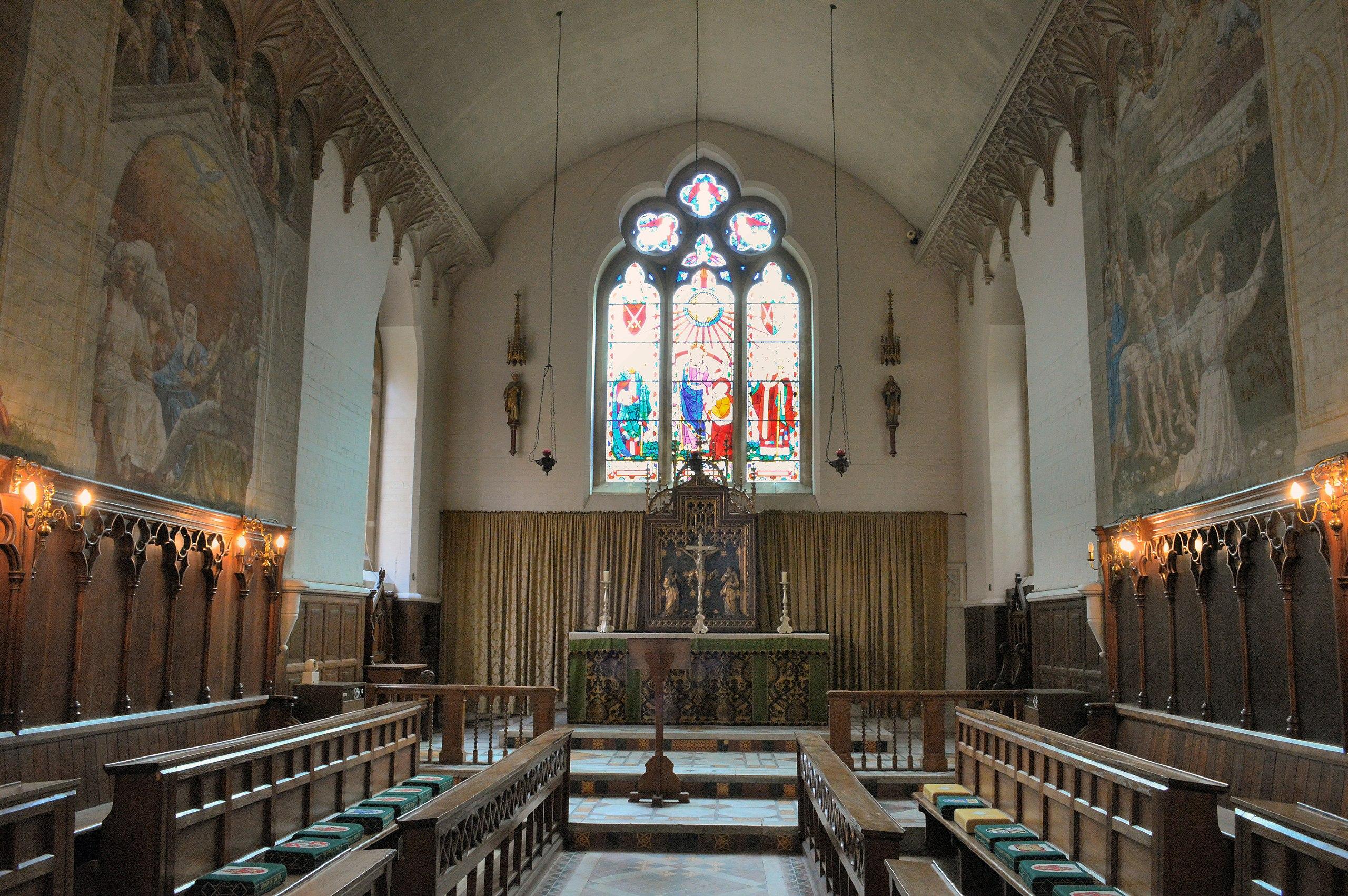All Saints
Wandsworth, Greater London
A Grade II* listed church in the heart of Wandsworth High Street and the original parish church of Wandsworth.

The present chapel at Fulham Palace is the fourth known at the site, designed by William Butterfield for Bishop Tait it was consecrated in 1867 but after bomb damage in the 1940s it was altered in the 1950s and is now a fascinating mixture of old and new.
Fulham Palace, Greater London
The chapel is reached by a corridor opposite the Great Hall to the right of the main entrance. In 1857 Bishop Tait moved to Fulham with his family, but the use of the Great Hall as an unconsecrated chapel was unsatisfactory; ‘my dear wife felt, as I did, that the ministrations for worship necessarily attaching to the chapel of the principal See House of so great a diocese required some more suitable arrangement. After much deliberation we determined to erect a new Chapel’ (Tait 1879).
This chapel is the fourth known at the Palace. Consecrated in 1867, and dedicated to the Blessed Trinity, it was designed by William Butterfield, at a cost of £1869 and is arranged choir wise. The polychrome brickwork (now overpainted) and inlaid stone were typical of his style, as are the brass altar cross and candlesticks set with moonstones on display in the Museum. The chapel plate dating back to 1653 is now in St Paul’s Cathedral. The marble in the sanctuary was moved from the Great Hall and incorporated with Minton encaustic tiles. Fittings were donated; the organ by Robson was given by the Bishop’s son Craufurd, and the glass in the west windows (Clayton & Bell) by the archdeacons and rural deans of the Diocese.
Following bomb damage in the Second World War the chapel was reorganised in the 1950s for Bishop Wand. The original glass mosaic reredos was moved to the west end. Brian Thomas and students from the Byam Shaw School of Drawing & Painting painted the murals (framed by a new plaster cornice) in 1953, deliberately obliterating Butterfield’s decorative brickwork.
A plain ceiling was inserted below the original, the dark oak woodwork stripped and a new east window designed by Sir Ninian Comper at a cost of £1260 and paid for by war compensation. It shows the Risen Saviour delivering the command to St Peter ‘Feed my Sheep’, flanked by portraits of Creighton and Wand, and the topmost angel depicts Bishop Wand’s son who died in a mountaineering accident in 1934.
The chapel, which seats seventy, is still consecrated. The exterior featured in the film ‘The Omen’ (1976).
Wandsworth, Greater London
A Grade II* listed church in the heart of Wandsworth High Street and the original parish church of Wandsworth.
Hammersmith, Greater London
The church, built between 1915-16, was founded by Augustinian priors and continues to be served by the order from the neighbouring priory.
Earls Court, Greater London
St Cuthbert’s is one of London’s largest and finest 19th century churches, it rises dramatically amongst the Victorian terraces of Philbeach Gardens, forming a group with the adjacent clergy house and Philbeach Hall.